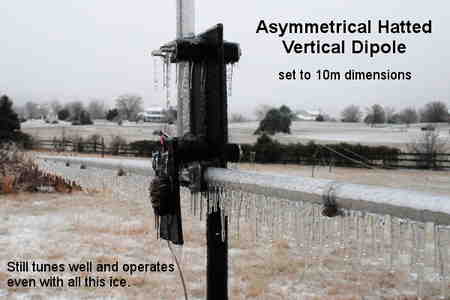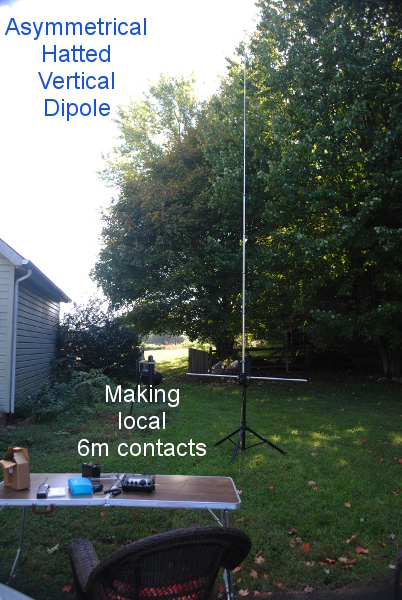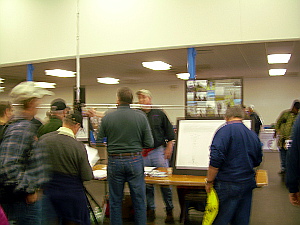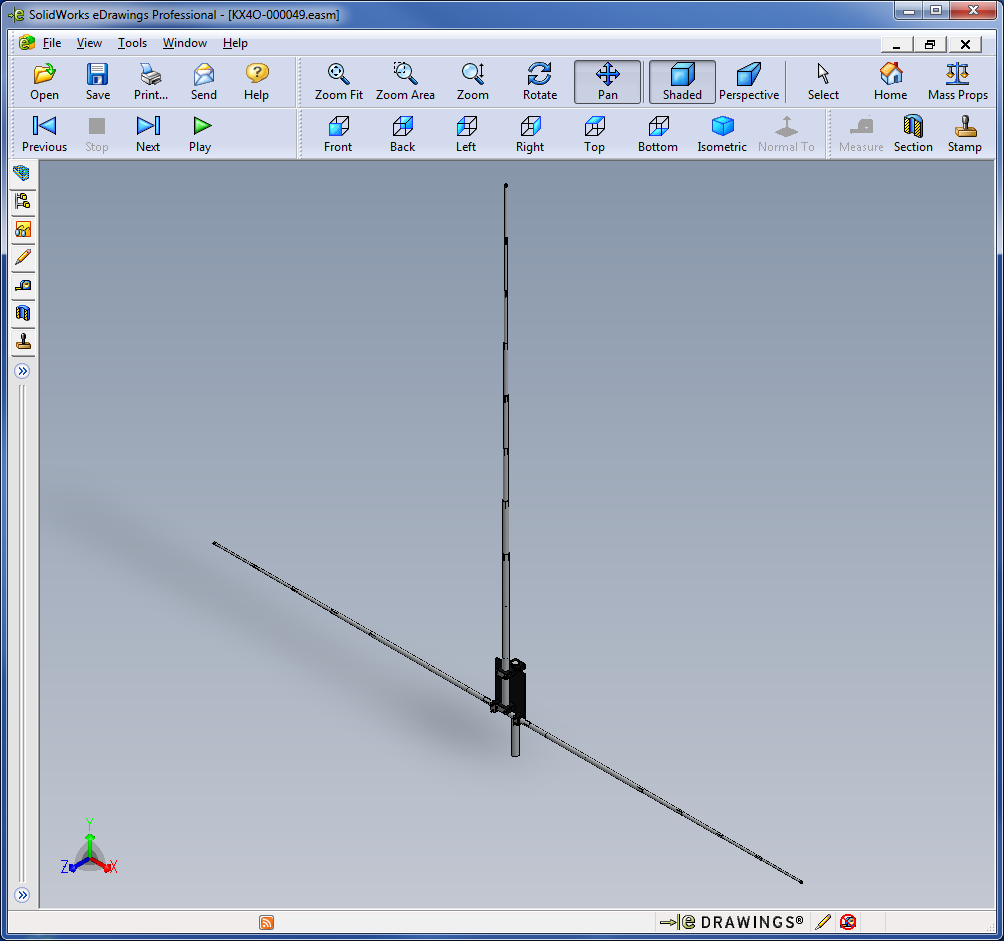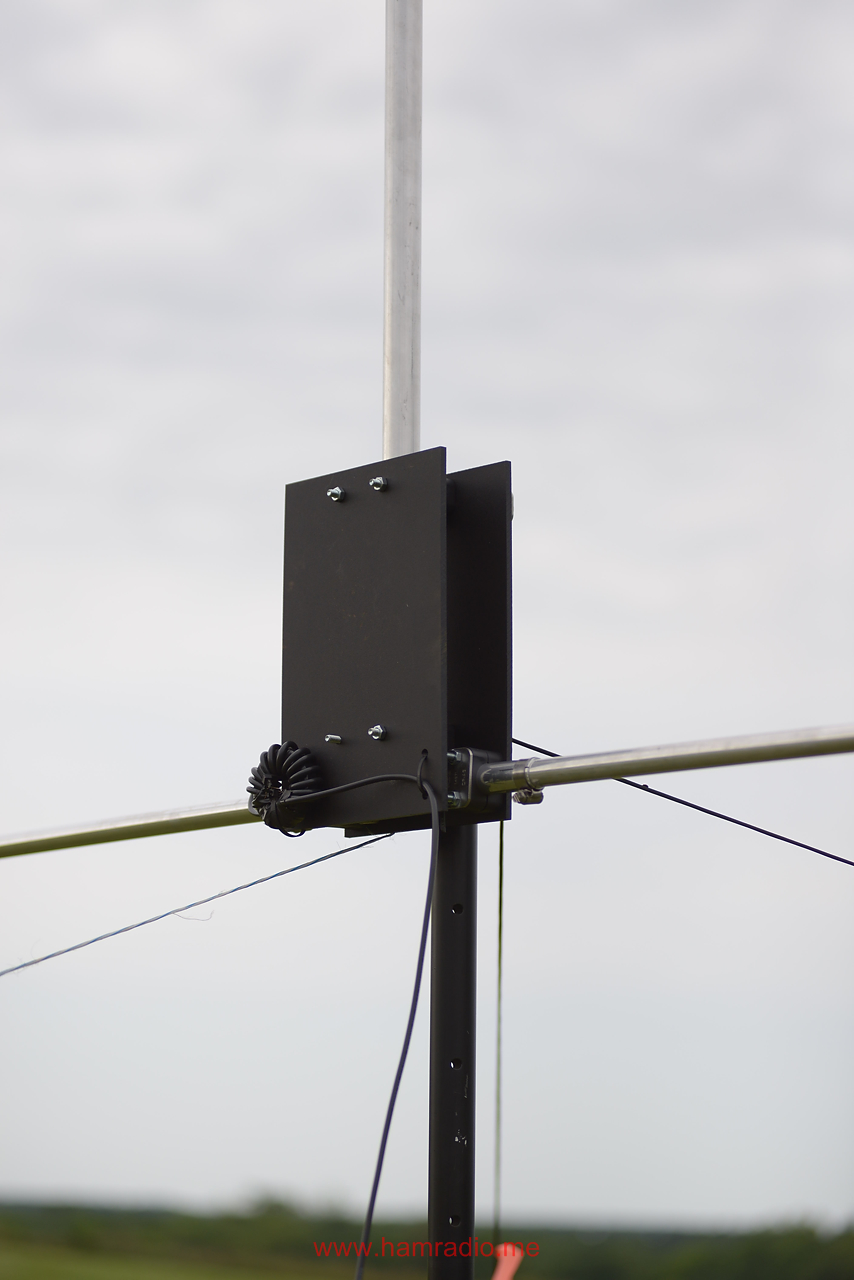In November I set up the Asymmetrical Hatted Vertical Dipole (AHVD) for the CQ-Worldwide-CW contest. I could only set for one band so I choose 10 meters (hereafter known as the AHVD/10m) to complement the 43 Foot vertical.
The AHVD performed reasonably well and was the go to antenna for ten meter contacts. I constantly switched back and forth between the 43 foot and the AHVD/10m. It really isn’t remarkable news a dedicated 10m vertical dipole beats a 43 Footer at 10m, but at least I now have A/B comparisons to confirm the theory.
Note, the AHVD was indeed better than the 43 Footer, but not by all that much. The difference appeared to be 1/2 to 1 S unit… not much at all.
Next I participated in the Ten-Meter RTTY contest last weekend with good success. Again comparisons between the AHVD and 43 Foot suggest the AHVD wins by a small, but consistent margin.
This morning an ice storm hit Virginia and the AHVD gained its share of ice along with everything else in my yard.
It certainly is a sight isn’t it. I wondered how the antenna would stand up to the ice load mechanically, but finally remembered the AHVD with the 10m dimensions has a lot of overlapping aluminum resulting in a ultra strong assembly. Those using the AHVD for 20m should evaluate if they should take the antenna down during ice storms.
After I took the photograph, I sat down in the shack to see if it still worked. I didn’t have a VNA handy to measure SWR, but did pay attention to the IC-746 SWR meter for some clues. It was indeed a little different than before, but the very wide bandwidth of the antenna design preserved good antenna behavior.
I made a few contacts on 10m to check things out. The band was somewhat active so I had no trouble earning a few QSOs with 100 watts or so into the AHVD including this one with W7GVW in Montana. He was using a Hexbeam pointing east. I heard him 59 and he heard me 58. Eventually QRM covered my transmission to him even though his signal remained consistently strong. It was a nice long chat while it lasted.
So the AHVD seems to work well enough with an ice load. I really wish I had a VNA handy though as I have long wondered how ice really affects antenna parameters. Next time perhaps.
73
John
